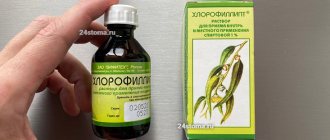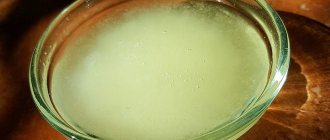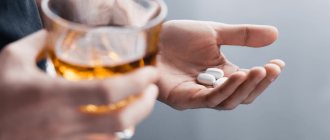L-carnitine is a vitamin-like substance that is found in the muscle tissue of all mammals, as it plays an important role in metabolism. Human muscle tissue and liver contain about 20-30 g of carnitine, depending on training and genetic characteristics. The need for it ranges from 0.2 to 0.5 g, and can reach up to 2 g per day during ultra-intense training.
L-carnitine is found in many foods that we eat every day, mainly all types of meat, as well as fish, cottage cheese, wheat and others. Despite this, there is often a shortage of carnitine from traditional sources and additional consumption is required, especially for athletes and people leading an active lifestyle and wanting to lose excess weight.
The daily dosage depends on many indicators, in particular on age, anthropometric indicators, health status and level of physical activity. Approximate dosages:
- For children under one year of age – up to 30 mg.
- Children from 1 to 3 years inclusive – 35-60 mg.
- Children from 4 to 6 years old inclusive – 60-100 mg.
- Children from 6 to 18 years old - from 100 to 500 mg.
- For adults who do not engage in sports, 250 to 500 mg is recommended.
- For athletes and people leading an active lifestyle and those who want to reduce excess weight, the recommended daily dose is from 500 to 1500 mg.
Despite the drug not being 100% harmless, you should not exceed the dose of 2 g/day, since this makes no sense, there is no direct relationship between the amount of carnitine consumed and the intensity of weight loss.
The duration of treatment can be from 2 to 6 months.
What is L-carnitine?
Firstly, it should be noted that L-carnitine is not that coveted “magic” pill that will help you lose weight without making any effort. Secondly, the probability that such a “magic” pill exists in principle tends to zero at the speed of light.
So, carnitine is found in muscle tissue and the name comes from the Latin “carnis” - meat. L-carnitine (levocarnitine) is a natural substance related to B vitamins, therefore it is often called a vitamin-like substance, and is also mistakenly called vitamin B11.
This substance is involved in metabolic processes that occur both in muscle tissue and in the liver. The main process in which levocarnitine is involved is the process of producing energy from fats. To be more precise, carnitine transports fatty acids into mitochondria, where oxidation (combustion, perhaps more eloquently) of fatty acids and energy production occurs.
To understand, let’s take a closer look at the process of using lipids as an energy source. Fat accumulated as a result of a couch-office lifestyle can be used by the body in 3 stages:
- Destruction of fat molecules (triglycerides) into glycerol and fatty acids under the influence of a complex of hormones and enzymes, as well as physical activity.
- Transport of fatty acids to mitochondria, where the oxidation process occurs
- Fat oxidation in mitochondria is one of the main processes of providing energy to the body.
Thus, L-carnitine promotes only one stage in the fat burning process. Excessive consumption of L-carnitine will not increase the transport of fatty acids if not enough of them were formed at the first stage. Levocarnitine only increases the effectiveness of aerobic (this is important) training, allowing you to burn a little more fat than without it. Something like this... And yes, training to burn fat should be aerobic, i.e. with sufficient oxygen supply to the tissues, since under anaerobic conditions fat cannot be used as an energy source, unlike carbohydrates.
Interaction with other drugs and hemodialysis procedures
Interactions with medications are considered safe due to the fact that the drug is a dietary supplement . It is also believed that the drug does not interact with other medications, and therefore there are no obstacles to taking it. In any case, you should consult your doctor before taking the drug.
There is not yet enough research according to all the rules of science, but doctors note the effect of L-Carnitine on patients undergoing hemodialysis . There is no single answer and no work from which to draw conclusions. Doctors advise eating more red meat.
Hemodialysis
— a method of extrarenal blood purification for acute and chronic renal failure. During hemodialysis, toxic metabolic products are removed from the body and disturbances in water and electrolyte balances are normalized.
It is believed that simultaneous use of the drug with lipoic acid and anabolic drugs enhances the fat burning effect . This is not a statement, and drugs affect the body of an individual person differently.
Drinking alcohol at the same time as levocarnitine will not cause harm to health , except for the harm caused by alcohol. There's no definitive pros and cons here, but the effects of alcohol on the liver and the liver's involvement in the process you're trying to improve may be related.
Indications for use
- For weight loss
The main indication for the use of L-carnitine is weight loss. Since L-carnitine plays an important role in the process of burning fat and, therefore, is one of the main agents used in schemes and diets related to weight loss.
- For mental activity
Based on the results of several studies, it can be concluded that the use of L-carnitine helps improve cognitive functions of the brain. And levocarnitine is recommended as a prevention of unwanted changes in the brain with age, as well as as a means of improving memory, concentration and attention.
- To increase endurance
Since L-carnitine promotes the production of additional energy from fat, it is indicated for use in athletes to develop endurance.
Sometimes the drug is recommended for vegetarians who are deficient in this substance due to the exclusion or insufficient consumption of animal products.
Indications
L-carnitine is prescribed to older people to improve memory, concentrate attention and slow down the aging process of the cerebral cortex. Patients with pathologies of the cardiovascular system take this drug to increase the resistance of the heart muscle to physical activity.
Elcarnitine is prescribed in childhood for insufficient development of the muscular system, poor appetite, and poor weight gain. It is recommended even for premature babies. For adults, the use of L-carnitine is also prescribed for severe underweight and exhaustion. Vegetarians take this medicine to compensate for the lack of levocarnitine in the body.
The medication is used by athletes to increase the effectiveness of training, build skeletal muscles, and increase endurance. As part of complex therapy, elcarnitine is prescribed for pathologies of the endocrine system, disorders of the heart and blood vessels, diseases of the pancreas and liver.
Natural sources of carnitine?
L-carnitine is found mainly in animal products, particularly meat and processed meats. In order to meet increased carnitine requirements, traditional sources are often not enough, since in addition to L-carnitine they contain fat and other nutrients that may not fit into the nutrition plan as part of a diet or sports training. In this regard, using L-carnitine supplements may be the best way to go.
However, you should not neglect natural sources of carnitine; the table shows products containing high concentrations of levocarnitine.
Meat and poultry
| Product, 100 g | Product type | L content , mg |
| Mutton | Raw/cooked | 150-160 (50-55) |
| Beef | Raw/cooked | 120-130 (45-50) |
| Veal | Stewed | 40-45 |
| Pork | Stewed | 20-25 |
| Rabbit meat | Stew | 20-25 |
| Turkey | Boiled | 13-15 |
| Chicken | Boiled | 8-10 |
| Duck liver | Stewed | 4-5 |
Fish and seafood
| Product, 100 g | Product type (processing) | L content , mg |
| Crustaceans | Boiled | 10-15 |
| Herring | Raw/salted | 10-12 (3,5-4) |
| Acne | Smoked | 6,7-7 |
| Flounder | Raw | 6,3-6,5 |
| Shrimp, langoustines | Raw | 6-6,5 |
| Sea bass | Fried | 5-5,5 |
| Tuna | Canned | 3-3,5 |
| Mussels | Boiled | 2,5-3 |
| Squid | Boiled | 2-2,5 |
In sea fish, the L-carnitine content rarely exceeds 5 mg, in river fish – up to 4 mg.
Dairy
| Product, 100 g | L content , mg |
| Goat cheese | 12-13 |
| Condensed milk | 9-10 |
| Yogurt | 3,5-4 |
| Unpasteurized milk | 3,5-3,9 |
| Ice cream | 3,5-3,7 |
| Heavy cream | 3-3,5 |
| Cottage cheese | 2,4-2,9 |
| Sour cream | 2,1-2,4 |
| Hard cheeses | 1,5-2 |
For comparison, in the table below you can see the carnitine content in foods of plant origin.
| Product, 100 g | L content , mg |
| Mushrooms | 1,3-3,9 |
| Fruits | 0,002-0,006 |
| Fruit juices | 0,0019 |
| Vegetables | 0,19-1 |
| Nuts | 0,05-0,08 |
| Peanut butter | 0,083 |
It should be borne in mind that during heat treatment of products, 25-30% of L-carnitine is destroyed and this must be taken into account.
Types of L-carnitine
- L-carnitine is 3-hydroxy-4-N-trimethyl-aminobutyric acid, this is the formula that is synthesized in the body from the amino acids lysine and methionine.
- Acetyl-L-Carnitine (ALCAR) is an ester form of L-carnitine with the addition of an acetyl group, which allows the substance to cross the blood-brain barrier. Only this form of carnitine helps improve brain activity. This form is also absorbed faster than the standard form of L-carnitine, but is also excreted much faster.
- L-carnitine L-tartrate is a non-ester (chelate) form of L-carnitine and tartaric acid, which is quickly absorbed in the body and, unlike other forms, remains in high concentration in the blood for a long time. This form is most often used by sports nutrition manufacturers.
- Glycine propionyl-L-carnitine (GPLC) is the ester form of L-carnitine bound to the amino acid glycine. This form has an antioxidant effect in the body and can increase blood flow during exercise, however, it is quickly eliminated from the body.
- L-carnitine fumarate - contains a fumaric group, has good digestibility, as well as antioxidant properties. Rarely used as a source of L-carnitine.
- Which is better?
In order to reduce body weight, it is recommended to choose non-ether forms (pure carnitine or carnitine tartrate), they are absorbed much better than other forms, and the carnitine content in the blood after taking these supplements is much higher and the effect lasts longer. At the same time, to improve brain activity, it is possible to use only the acetyl form.
Carnitine chloride (25 years in clinical practice)
N
Despite the almost 100-year history of the study of carnitine (it was discovered by Russian scientists V. Gulevich and R. Krimberg in 1905), this, according to Frenkel’s definition, “a natural growth substance of living organisms” continues to keep its biological secrets, including the mystery of the origin and duration of life itself.
In Russia (USSR), the domestic drug DL-carnitine chloride was developed at the NPO "Vitamins", and in 1978 its industrial production began in the form of a 20% solution for oral administration. However, an in-depth clinical study of DL-carnitine chloride began in 1986, after we, at the Clinic of Nervous Diseases 2 of the Moscow State Medical Institute named after. N.I. Pirogov, under the guidance of Academician of the Russian Academy of Medical Sciences, Professor E.I. Gusev, in collaboration with NPO “Vitamins” (Prof. V.M. Avakumov), an injectable form of carnitine chloride for intravenous use in the form of a 10% solution was developed and tested in the clinic on volunteers. Since 1993, a 10% solution of carnitine chloride has been approved for intravenous administration by the Ministry of Health of the Russian Federation.
Over the past years, the Clinic of Nervous Diseases of the Russian State Medical University (formerly 2nd Moscow State Medical University) has accumulated extensive clinical experience in the use of carnitine chloride in the treatment of patients with diseases of the nervous system. To better understand the mechanisms of the therapeutic effect of DL-carnitine chloride and evaluate its advantage over other carnitine preparations (in particular, L-carnitine), it is necessary to become familiar with the role of carnitine in the metabolism of a developing organism, because with many brain lesions, metabolism in the nervous tissue returns to the embryonic level and to restore it it is necessary to go through all the intermediate stages again, in which carnitine plays a leading role, and in the adult body its reserves are very limited.
Having penetrated the female egg from the sperm, carnitine activates the genetic mechanisms for the synthesis of its own carnitine. An increase in the level of carnitine in the egg triggers the enzyme life support systems of the embryo and the entire process of its growth. All newly formed cells during fetal development, including neurons, synthesize their own carnitine, which they produce throughout their life in the required quantities depending on the degree of maturity, functions performed, metabolic characteristics in a given tissue, and its structural integrity.
One of the main functions of carnitine is the transport of fatty acids (FAs) through the membranes of intracellular organelles, in which they are oxidized to form energy and “building materials” necessary for the development of the nervous system and a growing organism. In an oxygen-poor and glucose-poor environment where the fetus develops, fatty acids are the main source of energy, because Unlike glucose, they can be oxidized at low oxygen levels in the blood, but require large amounts of carnitine. Therefore, the synthesis and need for carnitine in the fetus’s body is increasing. At the early stages of development, FA oxidation occurs in the “ancient” cell organelles - oxisomes, peroxisomes, and later in young ones - mitochondria.
A very important, vital product of FA oxidation under hypoxic conditions is the formation in the body and accumulation in the blood at the time of birth of endogenous carbon dioxide. Thanks to this carbon dioxide, the newborn takes the first and all subsequent breaths in his life, because... Without it, the supply of oxygen from the air to the human body is almost impossible. Together with the energy supply of the fetus, carnitine participates in the most important processes in the formation and development of the brain and spinal cord, and the autonomic nervous system.
. In the initial stage of development, carnitine is the only neurotransmitter (conducting a nerve impulse) and, having a structural similarity with acetylcholine, itself performs its functions, laying the foundations of neuromuscular reception, forming and “training” neurotrophic cholinergic (controlled by acetylcholine) structures, as well as the parasympathetic department nervous system, responsible for the processes of growth, creation, accumulation, structural integrity and restoration of all tissues of the body.
In the first years of life, the importance of carnitine for the body remains very important. With its participation, the growth of the brain and spinal cord continues, the interaction of all parts of the nervous system responsible for movement and muscle interaction is improved. The energy supply of the entire body and brain is carried out due to two parallel processes in mitochondria: the more ancient carnitine-dependent oxidation of fatty acids and the young, increasingly powerful oxygen-dependent oxidation of glucose - aerobic glycolysis.
After 5 years, many of the functions of carnitine are taken over by the endocrine glands. Carnitine synthesis begins to slow down, the transport of fatty acids into mitochondria decreases, and they are gradually completely replaced from the energy process. In an adult, the brain receives energy through powerful aerobic glycolysis. Carnitine synthesis continues at a very low level and is completely used by the cell itself to maintain its structural integrity and conduct nerve impulses.
Carnitine is synthesized in the cytoplasm of nerve cells, from where, with the help of “concentration transport mechanisms,” it enters the nerve fibers into the area of its metabolic or neurotransmitter responsibility. Especially a lot of carnitine is synthesized in those parts of the brain that carry a large functional load (hypothalamus, cerebellum, spinal cord, cortex).
Carnitine plays a special role in the complex chain of movement regulation. This is due to the fact that the first motor receptor, transmitting a nerve impulse from the motor brain centers, and the final one, executing at the neuromuscular synapse, are cholinergic. According to the latest scientific data, carnitine “facilitates the meeting” of acetylcholine with these receptors, regulating the passage of a specific nerve command: the D-isomer of carnitine transmits “inhibitory” impulses, and the L-isomer transmits “activating” ones. Consequently, without the participation of DL-carnitine, the motor system cannot function normally.
Thus, any disorder of motor function, from paralysis to hyperkinesis, can be considered from the position of local neuronal carnitine deficiency. And the more impaired the synthesis and transport of carnitine in the affected area of the brain, the more severe the motor disorders in the innervated muscle group will be. Timely replenishment of this deficiency with the help of DL-carnitine chloride has a powerful therapeutic effect in many movement disorders. This allows us to confirm the experience of 17 years of using carnitine chloride for the treatment of motor disorders in more than 1000 patients (newborns, children and adults) with various diseases of the nervous system.
Thus, cerebral palsy (CP) is characterized by severe movement disorders. It develops as a result of damage during birth trauma to the periventricular region of the brain. At the site of damage, the synthesis of carnitine is disrupted, the conditions for the passage of a nerve impulse through this zone to other motor centers worsen, which ultimately manifests itself in the form of violent movements (hyperkinesis) and other movement disorders. Regular intake of carnitine chloride (orally)
, in the form of monthly short courses for 6–8 months in the first years of a child’s life (especially important before 5 years),
almost completely eliminate the symptoms of cerebral palsy
.
In peripheral paralysis, carnitine deficiency occurs due to a violation of its transport along the nerve, and in case of damage to the motor cells of the spinal cord, due to a decrease in its synthesis. Treatment of such patients, in particular those with facial nerve paralysis, with carnitine chloride (intravenously), gives a positive result even with diseases 7-10 days ago.
Neuronal carnitine deficiency also occurs in chronic progressive diseases of the nervous system (multiple sclerosis, amyatrophic lateral sclerosis, parkinsonism, brain atrophy, etc.). These patients received carnitine chloride for a number of years (up to 7 years), in short courses (from 4 to 6 per year). When treating patients with multiple sclerosis, they noted a significant improvement in movements, a decrease in muscle spasticity, tremor, and unsteadiness of gait. Exacerbations of the disease and their severity became less frequent (especially when the disease lasted up to 5 years). The quality of life of patients increased, some of them gave birth to a child without negative health consequences.
In patients with amyatrophic lateral sclerosis, treatment with carnitine chloride for 3 years showed an improvement in general condition, increased muscle strength, choking when eating disappeared, speech became clearer, and breathing disorders during sleep disappeared. Encouraging results were also obtained in the treatment of patients with parkinsonism, especially with a disease duration of up to 3 years. While taking carnitine chloride, their tremor disappeared and muscle rigidity decreased. Most patients were able to stop taking antiparkinsonian drugs while remaining on short maintenance courses of carnitine.
Acute neuronal carnitine deficiency develops in the brain during stroke and traumatic injuries. Emergency intensive therapy with carnitine chloride in the first three days of the disease allows not only to protect the brain from the damaging effects of ischemia and hypoxia, to activate the reserve links of energy (fatty acid) metabolism and the “process of restoring the structural integrity of nervous tissue, but also to inhibit the reactions and mechanisms of genetically programmed death of nerve cells (apoptosis). This multifaceted therapeutic effect of carnitine chloride allows one to minimize impairment of neurological functions during stroke.
and other severe lesions of the nervous system, restore patients’ ability to work, social usefulness and high quality of life.
DL-carnitine chloride has undoubted advantages over other carnitine preparations, in particular L-carnitine. Thus, carnitine chloride is not removed from the body within 24 hours (like L-carnitine), but quickly accumulates, is integrated into metabolic processes and continues to act after discontinuation of the drug for more than 10 days. Carnitine chloride has a calming effect, “quenches” epileptic activity, normalizes blood pressure and cardiac activity in vascular patients. L-carnitine in these patients has an stimulating effect up to the point of epi-syndrome, causing tachycardia, heart rhythm disturbances, and a rise in blood pressure. Carnitine chloride has a powerful “awakening” effect in patients with cerebral coma and quickly restores the activity of the stem respiratory center. It relieves dependence on alcohol and drugs, quickly restores the functional state of the body in case of fatigue syndrome, and is a good means of preventing stroke (over 17 years of observation, not a single patient treated in the acute period of the disease with carnitine had a recurrent acute cerebrovascular accident).
Thus, carnitine chloride is a reliable means of metabolic therapy for acute and chronic diseases of the nervous system. In terms of its effectiveness, it is currently superior to other cerebral metabolites.
Release forms
- Powder
Without additives, L-carnitine has a rather unpleasant taste, so powder products usually use various combinations of components, with energy drinks, vitamins, minerals and biologically active substances. Manufacturers are also forced to add such combinations of flavoring additives that will neutralize the unpleasant taste of carnitine and other substances. If you use natural flavors, the price of the product will be astronomical, and artificial flavors have conflicting reviews both in the scientific community and among consumers.
- Pills
L-carnitine in tablet form is most often found in pharmacies. The main disadvantage is the small dosages of the active substance in one tablet. As a result, this form is unprofitable and inconvenient.
- Capsules
The capsule form of L-carnitine is also pure, without additives, impurities, or sweeteners. The capsule usually contains 500 mg of L-carnitine, 4 of which are required per day. Before training, the daily dose is taken once within 30-40 minutes. On rest days, the supplement is taken 2 capsules 2 times a day after meals (the first dose in the morning, the second at lunch or at night). Capsules are washed down with a glass of water.
- Liquid form (ampoules)
This form with a high concentration of the active substance is quite convenient to use. However, when producing a liquid form, manufacturers are forced to add additional ingredients to stabilize taste and shelf life, including fast carbohydrates and preservatives.
- Which is better?
When choosing a form, you need to take into account the concentration of the active substance and price. If we proceed from digestibility, depending on the form of release of the drug and the maximum benefit, then the best options will be in the form of capsules and ampoules with a high concentration of the active substance.
Dosage form
L carnitine is produced in the form of syrup, tablets and capsules. The liquid form is sold in dark glass bottles. The syrup is packaged in 100 ml containers, which contain 10 g of the main active ingredient – levocarnitine.
Elcarnitine tablets can have different dosages - 100 mg and 500 mg. They are packaged in blisters of 10 pieces, the package can contain from 3-5 to 8 blisters. An additional ingredient here is ascorbic acid.
The medicine is also sold in capsules of 250 and 500 mg, packaged in bottles made of polymer material. There are 60, 150 pieces in one jar.
How to take L-carnitine correctly?
During strength training
The use of L-carnitine during strength training is not advisable; as already reported above, carnitine only acts during aerobic exercise.
For weight loss
L-carnitine should be used for weight loss based on the content of the active substance, therefore, 500-1500 mg of pure L-carnitine 40 minutes before the start of training or any physical activity. Taking during or after exercise is also inappropriate, since an increased need for L-carnitine is observed only at the time of physical activity; in order to provide the body with an increased amount of the active substance at this moment, the product must be taken 40 minutes before the start of physical activity. For two workouts per day, the portion is divided in half and 250-750 mg is taken before each workout.
Daily norm
To ensure optimal effect, it is recommended to take 500-1500 mg of L-carnitine per day. The use of more than 2000 mg per day is not recommended.
Duration of the course
Regardless of the form and type of L-carnitine, the duration of use is 2-3 months, the maximum period of use is 6 months. After the course of treatment, you should take a break of 2-8 weeks.
What side effects are possible when using L-carnitine?
In sports medicine, studies have been repeatedly conducted on the effects of L-carnitine on the human body, however, none of them found obvious side effects from taking the supplement.
In laboratory conditions, it was experimentally proven that exceeding the dosage of L-carnitine (even tens or hundreds of times) does not cause dangerous side effects, so it is impossible to get poisoned with this supplement (naturally, you should not abuse it). At the same time, there is a risk of individual intolerance to the drug, which is accompanied by such negative consequences as vomiting, nausea, gastrointestinal problems, a strong odor of sweat and urine, increased blood pressure and palpitations.
All these side effects are the result of individual intolerance to the supplement. If they appear (this happens extremely rarely), you should stop consuming the drug and consult your doctor about the advisability of further use. In addition, these effects may be a reaction to the colorants and flavor enhancers in the supplement (if any).
If recommendations for the use of L-carnitine are not followed, insomnia may occur. There is a very simple explanation for this. After taking L-carnitine, the level of energy that requires release increases, accordingly, the person feels cheerful and full of energy, which allows him to train more effectively. If the supplement is taken in the first half of the day (at this time it is most effective), by the evening the effect decreases, and the athlete fully rests. If you systematically take L-carnitine in the afternoon, without doing intense training, then when you go to bed, the athlete will suffer from insomnia. The last dose of L-carnitine should be taken at least 4 hours before bedtime.
In addition, while taking L-carnitine, there is an increase in appetite. Since L-carnitine speeds up metabolism, the body spends energy faster and depletes its reserves. The brain reacts to depletion of energy reserves with a feeling of hunger. Getting rid of excessive appetite is very simple: just follow the correct regimen of taking the supplement and proper nutrition, enriched with protein and fiber.
Depending on the form of release of the drug
- Taking L-carnitine tablets
L-carnitine tablets are taken according to the manufacturer's instructions, not exceeding the daily allowance of 2000 mg. The tablets take a little longer to digest, so it is advisable to take them 40-60 minutes before starting a workout or physical activity.
- Taking L-carnitine capsules
The capsules are absorbed quite quickly, so they should be used according to the instructions, not exceeding the maximum daily intake 40 minutes before the start of physical activity.
- Taking L-carnitine in liquid form
Take according to instructions, without exceeding the maximum dosage, 40 minutes before training. If necessary, you can dilute the ampoule in a glass of water. Please note that often the liquid form contains sugars and other components that may interfere with optimal goal achievement.
- Taking L-carnitine powder
One serving is equal to one measuring spoon provided by the manufacturer, which must be diluted in 250-300 ml of water. Take 40 minutes before training.
Regardless of the form of release and the type of L-carnitine, there is no need to exceed the maximum dosage of 2 g. Since there is no direct relationship between the concentration of carnitine and the weight loss process. As stated above, the process of burning fat is a multi-stage process, and carnitine affects only one stage.
How to take with other drugs?
- L carnitine and BCAA
L-carnitine combines well with almost all sports nutrition products and dietary supplements, and in particular with branched chain amino acids (BCAA). The combined intake of BCAAs and L-carnitine will ensure the preservation of muscle mass while burning fat, and will also speed up recovery after training and improve metabolic processes. Also, taking carnitine along with protein supplements will allow for more efficient fat burning, since increasing the protein component of the diet indirectly helps to start the fat burning process.
- L-carnitine and creatine
L-carnitine also combines well with other substances synthesized by the body, including creatine. However, it should be understood that creatine is a mass-gaining supplement and its use promotes fluid retention in the body and muscle tissue. Which is not really necessary when losing weight, given that the process of fat oxidation leads to the formation of additional fluid.
Main mistakes when consuming L-carnitine
There are practically no side effects from the use of carnitine, but improper use can reduce the effect of use to 0. Main errors when using:
- Wrong appointment time. When taking it, it should be taken into account that the maximum activity of L-carnitine is achieved 30-40 minutes after application and lasts 2-3 hours. Based on this, it is necessary to take carnitine 40 minutes before the start of physical activity.
- As already mentioned, levocarnitine is not a magic pill and works only in combination with physical activity; the effect can be significantly increased by balancing the diet and removing excess useless calories from it.
Tips and tricks
To achieve maximum effect and get the perfect body. It is necessary to take a comprehensive approach to solving the problem.
- Traditional food. It is necessary to reduce the content of fat and fast carbohydrates (sugar) in the diet. It’s better to give up sugar altogether; now there are quite a lot of opportunities to satisfy your sweet needs without consuming sugar. Increase the protein content in the diet (lean meat, chicken, turkey, fatty fish). In general, it is necessary to provide an energy deficit to mobilize the breakdown of internal fat deposits.
- Increased activity. First of all, you need to introduce systematic cardio exercise (aerobic exercise) into your life. As mentioned above, only with aerobic exercise is carnitine effective and promotes fat burning. At the same time, strength training should also not be neglected, since an increase in muscle mass will speed up metabolic processes and increase the amount of carnitine that is stored in the muscles.
Would you like to receive a 20% discount on your entire order?
You just need to Register and you will receive an email with a promotional code! Wrote:
Tokaev Enver Saidovich more details Khasanov Adam Alievich more details







